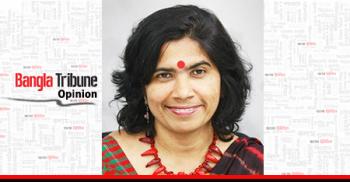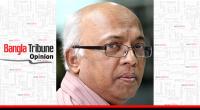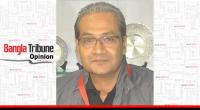 The situation of the Chittagong Hill Tracts (CHT) cannot solely be addressed through the lens of ‘Bangali Pahari’ discourses. The contested relationships contribute to a dynamics of politics of the CHT.
The situation of the Chittagong Hill Tracts (CHT) cannot solely be addressed through the lens of ‘Bangali Pahari’ discourses. The contested relationships contribute to a dynamics of politics of the CHT.
My observation placed in this write up identifies the different types of Bangali individuals and how they are perceived by various Pahari populations, how socio-economic position, political power and historical conditions cause tensions among the indigenous communities and outside of them, how even the relationships bound in trust become signs of betrayal among the same group of people or those outside their realm and how these changes have irrevocably altered the stereotypical images of friends and traitors.
It may appear that these are new phenomena in the CHT, but in fact the contested relationship was and is the reality of the CHT, which shapes the politics and lives of the people in that region. Recently, Naniarchar Upazila Chairman Shaktiman Chakma (a reformist and vice-president of the Jana Sanghati Samiti MN Larma faction) was shot dead and five of his mourners, including United People’s Democratic Front (Ganatantrik) leader Tapan Jyoti Chakma, were murdered the following day in a gun attack while on the way to his funeral.
In March 2018, Hill Women’s Federation General Secretary Monty Chakma and its Rangamati district unit General Secretary Dayasona Chakma were abducted and released after a month. Mithun Chakma, an organiser of CHT-based political group United People’s Democratic Front (UPDF), was shot dead by unknown assailants in Khagrachhari in January 2018.
CHT, government perspectives and the dynamics of relationship
The perspective of the government about CHT as it is treated as ‘dumping zone’ or ‘punishment zone’ for civil servants. This indicates that the CHT is such a bad region, where the civil servants feel they are being punished.
The government still treats it as a ‘dangerous and insecure zone’. This also highlights how the people who have been sent to the CHT are treated by the government and the Bangali people in the CHT.
Recently, a protest was made when Kongjuri Marma, the chairman of HDCs in Khagrachari, refused to accept Sadek Ibne Shams joining the administration as he was transferred to Khagrachari as a punishment for his involvement in corruption in the agricultural department.
“Khagrachari is a place for good people, why are we always given bad administrators? ” asks Kongjuri Marma. In addition to this, Health Minister Mohammad Nasim has recently warned doctors who smoke that they will either be terminated or transferred to Bandarban as a punishment.
Bangalis in the CHT
Besides, the Bangali people living in the CHT cannot be treated as a homogenous category for several reasons but on other issues, they might march together. The indigenous people in categorise them in three types: Adi Bangalis—who have been living in the CHT since the British period; Settler Bangalis— who had been brought as part of the government’s ‘Development Programme’ started in 1979; Other Bangalis— who migrated because of their job, business or religious work.
Since the Adi Bangalis have been living side by side with the indigenous people' for as long as they can remember there is not much animosity towards or from them. However, this attitude changes if there are any specific clashes between individuals.
Among the three groups, the most unwanted or disliked are the Settler Bangalis as they were the ones who came and invaded the land and life of the indigenous people. They were the ones who took over the lands and businesses not by their own right but by the mighty and mercy of the army. Hindu Bangalis are the minority among the Bangalis in the CHT. Most of them were settled there before the partition and have more close relation with the Tripura people due to their same religious belief. Not all indigenous groups can be categorised in a homogenous way as there exist multifaceted hierarchies that result from socio-economic conditions, positions of power and authority and even skin tone.
There are also class issues among the settler Bangalis. Not all settler Bangalis are equally powerful. And all of them do not dominate the indigenous people.
The people, who were brought as a part of the government development programme, belonged to the low-income group. Some of them worked at the houses of upper socio-economic indigenous people and also ploughed the land owned by the indigenous people. Some of them have been working for wealthy indigenous families. They are being used in election campaigning but they have not been given appropriate jobs. They want to get back to their own places as they think that they are victimised more widely in the CHT than they were. They had to borrow money from the Mahajan but sometimes were not able to repay it on time and their remaining assets (homestead or other belongings) were taken away by the Mahajan or his people. Sometimes they worked for the interests of indigenous people to the extent that the Bangali leaders or other wealthy people did not like them and treated them as agents of indigenous people.
Examining Bangali people in the CHT, the same question may arise: are all Bangali people in the CHT living within the ‘friends’ camp? Do the Bangali people living in other parts of Bangladesh agree on CHT issues? The answer will be ‘no’ in this case as well. The Bengali people are divided into various political camps i.e. Awami League, BNP, Jamat E Islami, Bangladesh SamajtantrikDol (BSD) etc. They have their student and youth organisations such as ‘Bengali Chatra Parishad and Bengali Jubo Porishad respectively.
Enemy within and between
After nearly 10 years of peace talks, the government of Bangladesh and PCJSS signed the Chittagong Hill Tracts Accord (also known as ‘Peace Accord’) on Dec 2 1997, which ended two decades of armed conflict. However, The United Peoples Democratic Front (UPDF) – a breakaway group of the PCJSS –opposed the accord saying that it failed to address the issue of full autonomy, the most important demand of the PCJSS.
In 2007, when the military-backed government came to power for two years, they tried to initiate reformation among the political parties. The reformation group of the JSS emerged with the leadership of Sudha Sindhu Khisa and they created a different sub group called JSS (MN Larma faction). The division of PCJSS are commonly known as JSS(M) for the mainstream and JSS(R) for the reformist.
The UPDF also split in 2017, the new faction branded them as UPDF (Democratic). After peace treaty, armed terrorists of JSS, UPDF and Reformists have killed 2199 people, injured 2290 and abducted 2392 people as of 30 Sep 2017. (The Independent, Dec 4, 2017)
The members of the civil society had also been divided in favour of or against the peace accord. After the accord, it is said that some leftist groups, especially Lekhok Shibir, patronised the UPDF.
However, before the peace accord was signed, the military invited most of the intellectuals to the Hill Tracts with their special arrangements. And after the event, some of them wrote articles in favour of peace accord before it was signed. However, the two groups (JSS and UPDF) also labelled the members of civil society in favour of groups by observing their relationship with the leaders of each group
The existing conflict between JSS, UPDF and the reformist groups of both parties has been treated as 'Bhatre Sanghat' (brother against brother) by many academics and activists writing on or working in the CHT . This was evident when I visited my friend, who was JSS activist, but joined the reformist group a few months before.
I went to his house at around seven in the evening. When I knocked the door, nobody responded, but I could hear sounds coming from inside.
After fifteen minutes, an elderly person opened the door and asked me who I was. Then my friend emerged from inside and explained that they did not open the door at that time because people might come in and shoot them.
He said that he had joining the BNP to save his life. According to him, among the regional political parties, the conflict has escalated, so he needed the support of the second largest national political party for his safety.
He told me that now they are fighting for several causes, but earlier it was just against the military and Bangali settlers.
Now they have to fight their own people. It was his opinion that the government of Bangladesh had benefitted from this conflict among the indigenous people in the CHT.
In conclusion, I would like to refer to a question posed by one of my respondents from the CHT, who told me that now it had become difficult for them to identify who the real enemy was. Previously, they considered the military as their key enemy, and then it was the Bangali settlers; but now their own people were involved. Puzzled by all of these, he asked me, “Could you please tell us who our real enemy is?”
A Dhaka University Anthropology teacher, Zobaida Nasreen can be reached at [email protected]
 Opinion
Opinion
30842 hour(s) 55 minute(s) ago ;
Evening 09:49 ; Tuesday ; Apr 23, 2024
CTG Hill tracts: The contested relationships and dynamics of politics
Send
Zobaida Nasreen
Published : 18:13, Jun 04, 2018 | Updated : 18:16, Jun 04, 2018
Published : 18:13, Jun 04, 2018 | Updated : 18:16, Jun 04, 2018
0 ...0 ...
/zmi/up-sas/
***The opinions, beliefs and viewpoints expressed in this article are those of the author and do not reflect the opinions and views of Bangla Tribune.
- KOICA donates medical supplies to BSMMU
- 5 more flights to take back British nationals to London
- Covid19: Rajarbagh, Mohammadpur worst affected
- Momen joins UN solidarity song over COVID-19 combat
- Covid-19: OIC to hold special meeting
- WFP begins food distribution in Cox’s Bazar
- WFP begins food distribution in Cox’s Bazar
- 290 return home to Australia
- Third charter flight for US citizens to return home
- Dhaka proposes to postpone D8 Summit
Unauthorized use of news, image, information, etc published by Bangla Tribune is punishable by copyright law. Appropriate legal steps will be taken by the management against any person or body that infringes those laws.
Bangla Tribune is one of the most revered online newspapers in Bangladesh, due to its reputation of neutral coverage and incisive analysis.
F R Tower, 8/C Panthapath, Shukrabad, Dhaka-1207 | Phone: 58151324; 58151326, Fax: 58151329 | Mob: 01730794527, 01730794528


